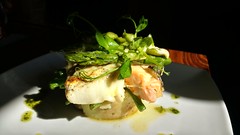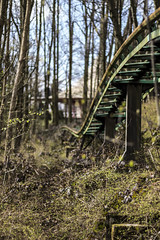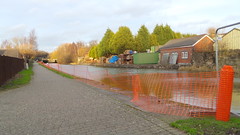Horwich
Horwich (English: /ˈhɪ/) is a town and civil parish in the Metropolitan Borough of Bolton, Greater Manchester, England. within the Historic County Boundaries of Lancashire, It is southeast of Chorley, northwest of Bolton and northwest of Manchester. It lies at the southern edge of the West Pennine Moors with the M61 motorway passing close to the south and west. At the 2011 Census, Horwich had a population of 20,067.
Horwich emerged in the Middle Ages as a hunting chase. Streams flowing from the moors were harnessed to provide power for bleachworks and other industry at the start of the Industrial Revolution. The textile industry became a major employer and after 1884 the construction of the railway works caused the population of the town to increase dramatically. The old industries have closed and urban regeneration has been led by out of town developments, particularly at Middlebrook, which, since 1997 has been the base of Bolton Wanderers football club, who play at the University of Bolton Stadium, having moved from Burnden Park near Bolton town centre.
History
The name Horwich derives from the Old English har and wice, meaning the place at the grey wych-elm and in 1221 was recorded as Horewic. The name was recorded as Harewych in 1277 and Horewyche in 1327.
Horwich Forest
Horwich grew from its original 'bridge point settlement' on the River Douglas at what is now Scholes Bank. By the Middle Ages Horwich was a hunting chase, after the Norman Conquest held by Albert de Gresle between 1086 and 1100. In 1277 Robert Gresle, Baron of Manchester prosecuted Martin de Rumworth for carrying off deer in Horwich Chase which was described in 1322 as being within "a circuit of sixteen leagues with a yearly value in pannage, aeries of eagles, herons and goshawks, in honey, millstones, and iron mines, in charcoal-burning, and the like issues, 60 shillings; of which the vesture in oaks, elms and wholly covered with such, 160 marks." In 1294 Thomas Gresle, sixth Baron of Manchester obtained free warren over "Horewich". The local enforcement of Forest Law was through a Bailiff who served the Lord of the Manor and it was he who decided punishments. Trespassers in the forest were brought before the Manorial Court Leet.
Preindustrial
By the 16th century, subsequent to the reformation land ownership had shifted from Church to the crown and was then sold to new owners, who transformed the town into an agricultural economy, and forests were cleared. Many of the farms from the period still existed until the housing boom of the 19th and 20th centuries, like many Lancashire towns the cotton industry was prominent as at least a secondary occupation in many households, weaving became a widespread occupation, and industries like bleaching, dying and paper making grew from the use of water power with the towns preindustrial plentiful access to flowing water. The town continued this path until the arrival of the railway workshops in the 19th century.
In 1598 a number of men were presented at the court leet for tithing and in 1621 the court leet recorded "paid for hue and crye that came from Horwich after the man who made an escape forth of ye stocks for stealing certain lynen cloth 8d". The earliest map of Horwich is dated 1620 and is known as 'The Platt of Horwich', naming the landowner as Sir Thomas Barton, of the Barton family of Holme Hall in the manor of Holme Newark and Smithills Hall, Bolton. A plague pit is noted on the map, with victims of a 1623 outbreak, interred in a mass grave under what is now Lever Park Avenue. By the 17th century, the amount of woodland in the Horwich forest was reduced by house building and for fuel. Horwich Moor was enclosed between 1815 and 1818. Race meetings were held between 1837 and 1847 at the 'Old Lords estate', an area next to the Rivington border, named after 11th Baron Willoughby. Four Barons Willoughby of Parham are interred at Horwich Parish Church.
The manor became the property of the Andertons of Lostock Hall, Lostock, who purchased it in 1599 from Nicholas and Elizabeth Mosley. These lands were confiscated by The Crown in 1715 after the Battle of Preston. They were leased to the Blundells whose coat of arms is displayed above the door at the Blundell Arms on Chorley Old Road.
The Pilkington family were notable in the town's history, prior to the Ridgways. The town coat of arms incorporates the Pilkington Cross, in recognition of the founder of the Rivington and Blackrod High School, James Pilkington, Bishop of Durham and the prominent role in the local history of the family. Richard Pilkington, a leading non-conformist and owner of Horwich Manor, and his family feature in the town's history from the post Protectorate to the industrial revolution being benefactors and founders of a number of places of worship. Another William Pilkington (1765–1831) became a physician and apothecary in St Helens. It is this branch that links Horwich to the founders of Pilkington Glass, his sons being Richard (1795–1869) and William (1800–1872).
Industrial Revolution
In the 1770s brothers, John and Joseph Ridgway, land agents to the Blundells, moved their bleach works from Bolton to Wallsuches. Their works was the oldest and one of the few stone-built mills in the Bolton borough. The firm was one of the earliest users of chemical bleaching using chlorine. In 1798 the firm installed a Boulton and Watt steam engine.
Horwich Vale Printworks, founded in 1799 by the River Douglas, printed cloth using machines and handblocks. On the slopes of Winter Hill, stone was quarried and there were several small collieries and a firebrick and tile works. In 1896 the Montcliffe Colliery was owned by Adam Mason and Son and managed by Joseph Crankshaw and Joseph Kenwright. It employed 26 men underground and seven surface workers getting coal and fireclay from the Mountain coal seam. Crankshaws pipeworks used the fireclay and had had several beehive kilns at their works at Tiger's Clough. In the mid-19th century, cotton mills were built by W. & W. Bennett and Peter Gaskell.
Ridgways provided land for the early 19th century Club Houses, a grid pattern development of streets of stone built cottages south of Church Street. Some had basements for hand loom weaving. In 1851 the occupants were crofters, stovers and bleachers.
Heavy Industry
In 1881 the population of 3,761 lived in 900 houses and had remained stable for fifty years, the arrival of the railway works and other industries including W.T. Taylor's cotton mill resulted in a considerable change to Horwich leading to a rapid increase in population, creating a boom in population by 1891 to 12,850 people, Horwich became a railway town in this period of the Industrial Revolution.
Coming with this increased population was a need for more houses, schools, and retail and service industries to provide for this new population. Large areas of former farmland was built on with the creation of vast numbers of brick terraced house streets of Victorian and Edwardian types of two-up two-down for the working class who had arrived from across Britain and Ireland, still used in the 21st century. Many new streets near Horwich Locomotive Works were named after famous engineers of the time. Local government in Horwich meets and is administered from a typical Victorian-style building which became known as Horwich Public Hall, a gift to the town by Peter Martin of The Street, Rivington in 1879 and still in use. The post-war years saw a boom in the builds of Council Houses.
In 1937 the de Havilland Aircraft Company built a factory that supplied aircraft to Cobham's Flying Circus. During World War II the factory manufactured variable pitch propellers for Spitfires, making it a target for German bombers, who in July 1942 attempted to raid the factory by employing some of Germany's best pilots and crews in two Junkers JU 88 bombers in a mission using the Rivington reservoirs as landmarks to navigate at low level flying over the water then rooftops of Lever Park to find its target. The raid went off course due to low clouds. The company was taken over by Hawker Siddeley and subsequently British Aerospace, the site was halved and moved to the south side of Hall lane Lostock when taken over by MBDA in 1997 it is still in 2013 making missiles and the site is now used for integration and test purposes. Horwich works was very active in armament production in the first and second world wars, in recognition George VI and his wife Queen Elizabeth visited the town in 1940.
Railway Town
In the period of the railway works from spring 1884 to 1983 Horwich changed drastically. The site first opened as the Lancashire and Yorkshire Railway (L&YR) works, leading to a large complex for building and maintaining locomotives, the site replaced one at Miles Platting.
Horwich Works was built on 142 hectares of land bought for £36,000. The first workshop, Rivington House opened in February 1887. It is 106.7 metres long by 16.8 metres wide. The long brick built workshops had full-height arched windows and were separated by tram and rail tracks. Work to construct the three-bay, 463.3 metres long, 36 metres wide, erecting shop began in March 1885. Inside it were 20 overhead cranes. By November 1886 the first locomotives arrived at the works for repair.
The first Horwich built locomotive, Number 1008, left the works in 1887 and is preserved at the National Railway Museum.
In the First and Second World War, the works played a part in the war effort manufacturing tanks and munitions. The war led to women being employed in manufacturing at the site, but this did not continue in post-war years with occupational inequality persisting.
The L&YR amalgamated with the London and North Western Railway in 1922 becoming a constituent of the London, Midland and Scottish Railway, (LMS) in 1923.
Horwich Works continued to build and repair locomotives for the LMS until the company was nationalised in 1948 by the Transport Act 1947, becoming British Rai…
Hotels Horwich
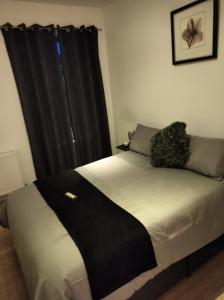 Entire home for 5-6 guests in HorwichHorwich
Entire home for 5-6 guests in HorwichHorwich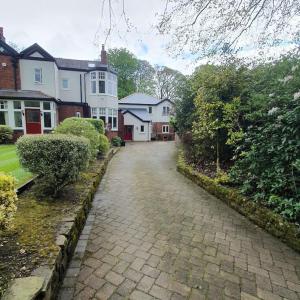 ChurstonBnB, private flat within family home, BoltonLostock
ChurstonBnB, private flat within family home, BoltonLostock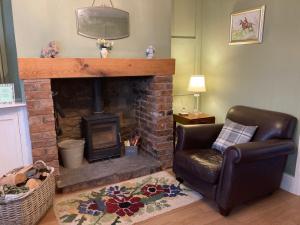 Adlington Cottage, LancashireAdlington
Adlington Cottage, LancashireAdlington The Old Post Office ApartmentAdlington
The Old Post Office ApartmentAdlington Crown at Worthington HotelStandish
Crown at Worthington HotelStandish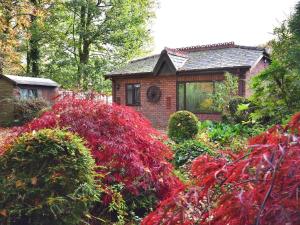 South Lodge CottageStandish
South Lodge CottageStandish Haigh Park View - WiFi, Parking DW Stadium & HospitalStandish
Haigh Park View - WiFi, Parking DW Stadium & HospitalStandish
Looking for places related to Horwich?
Those are other destinations to find places related to Horwich:




